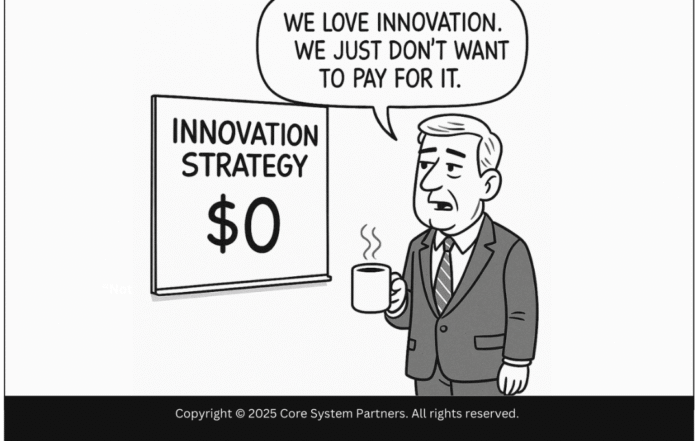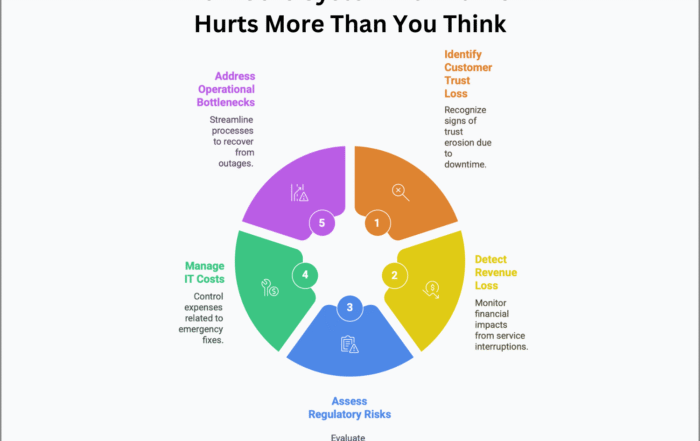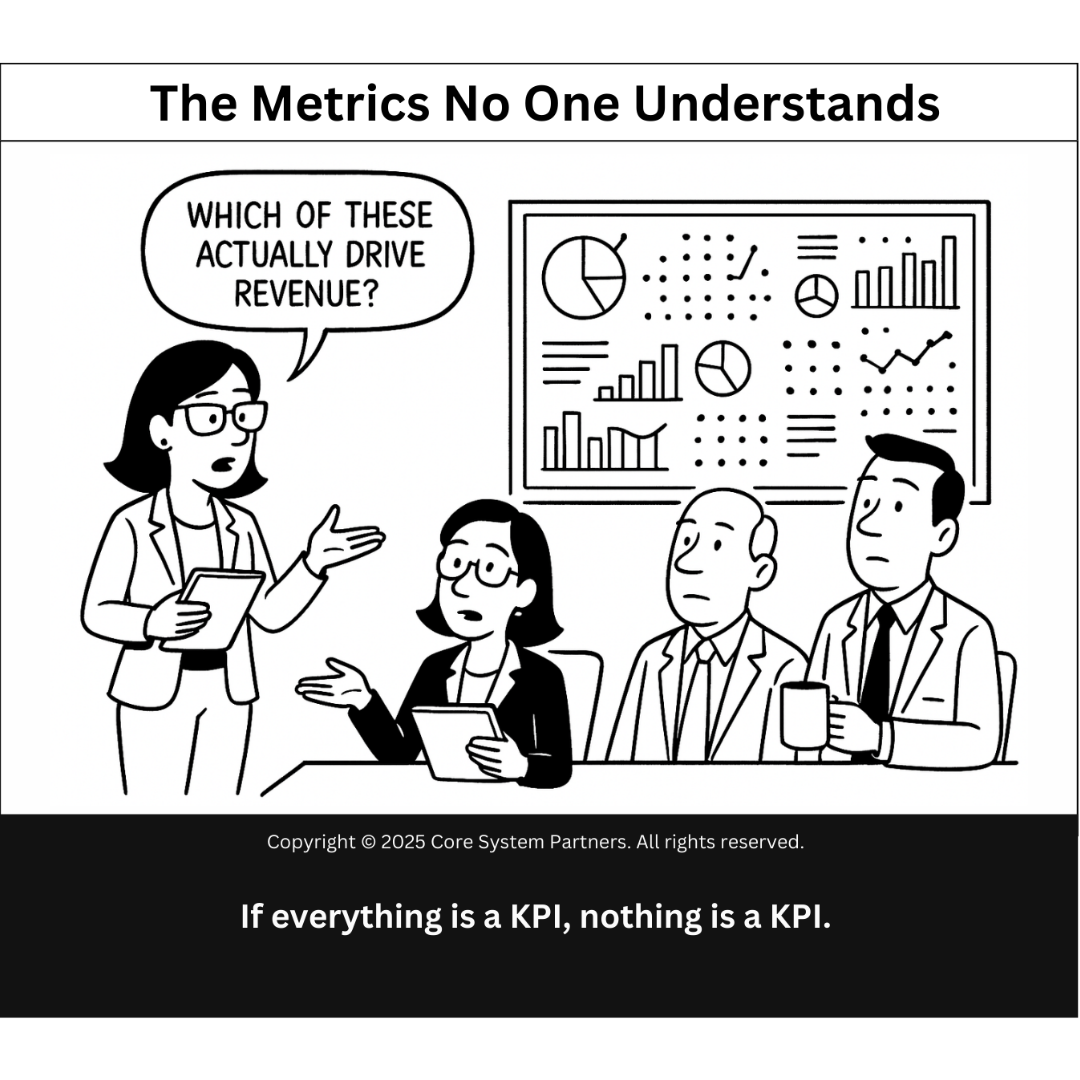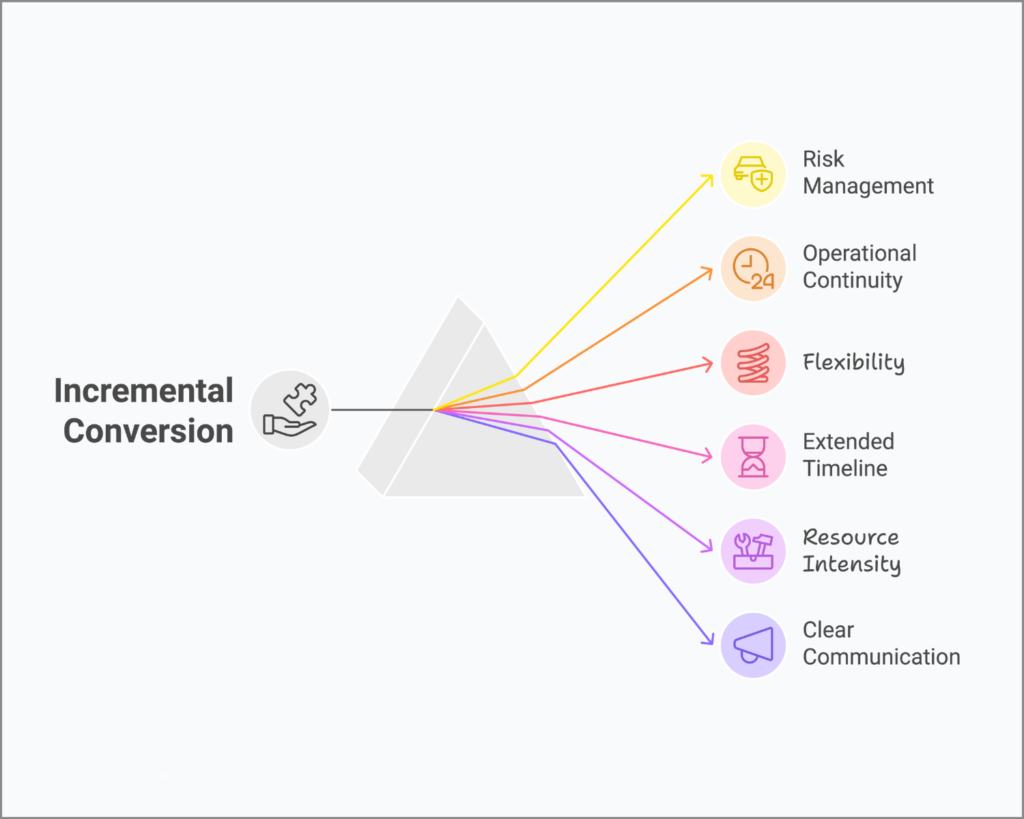
Incremental Conversion: A strategic, step-by-step approach to core banking transformation, ensuring smooth transitions and continuous operations.
Have you ever tackled a complex puzzle by carefully placing each piece one at a time?
That’s the essence of Incremental Conversion in the banking sector. This approach allows banks to manage the transformation of their core systems by breaking the process down into smaller, more manageable steps. Recently, a bank executive shared how this method helped their institution avoid the upheaval that often accompanies comprehensive system overhauls. By focusing on less critical systems first, they could iron out kinks before proceeding to more significant changes.
What is Incremental Conversion?
Incremental Conversion is a strategic approach to gradually updating a bank’s systems and processes. It’s akin to renovating a home one room at a time—each step is manageable and contained. This method mainly benefits large, multifaceted banks where a full-scale transformation could disrupt daily operations.
When to Consider Incremental Conversion
Incremental Conversion is particularly well-suited for banks that:
- Operate on a Large Scale: Large institutions can mitigate risk by managing smaller transformation segments one step at a time.
- Prioritize Operational Continuity: This method ensures that core activities are not disrupted for banks where continuous operation is critical.
- Require Flexibility for Testing and Adjustments: This approach allows for adjustments based on real-world testing of each increment.
Incremental Conversion vs. Phased Approach
While both Incremental Conversion and a Phased Approach involve gradual transformation, they differ in scope and implementation focus. Incremental Conversion breaks down the transformation into smaller, contained steps across different systems or components, allowing changes to be tested and adjusted incrementally without significantly impacting overall operations. In contrast, a Phased Approach involves transitioning entire segments, such as departments, regions, or major functionalities, before moving on to others. Incremental Conversion is more granular, addressing smaller components or processes within the core system, whereas the Phased Approach focuses on larger chunks of the bank’s operations. The choice between these strategies depends on the level of control, risk tolerance, and the scale at which the bank prefers to manage its transformation.
Advantages of Incremental Conversion
Adopting an Incremental Conversion strategy offers several benefits:
- Risk Management: By implementing changes in increments, potential issues affect only a tiny part of the organization at any time.
- Flexibility: Adjustments can be made after each phase, allowing for refinement and optimization before proceeding.
- Maintained Operations: Critical functions continue running smoothly, crucial for customer retention and satisfaction.
Challenges of Incremental Conversion
However, this method comes with its own set of challenges:
- Extended Timeline: The transformation might take longer to complete, delaying the full benefits of the new system.
- Resource Intensity: Managing multiple phases requires sustained effort and resources, which can strain staff and budgets.
- Complex Coordination: Ensuring consistency across phases demands meticulous planning and communication.
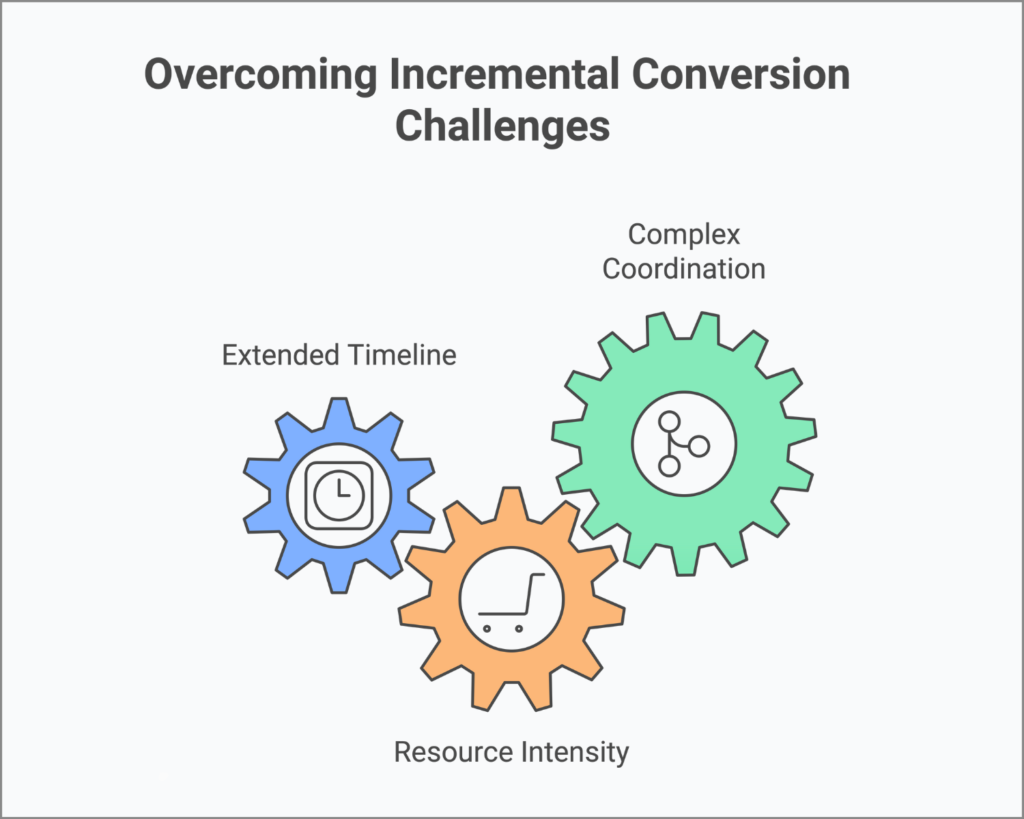
Implementing Incremental Conversion Effectively
To successfully roll out an Incremental Conversion, consider the following best practices:
- Prioritize Phases Wisely: Begin with non-critical systems to minimize the impact on core operations and use these early phases to refine your approach.
- Engage Comprehensive Testing: Thoroughly test each increment to ensure functionality and address issues before they escalate.
- Maintain Clear Communication: Keep all stakeholders informed about progress and changes. Transparent communication helps align efforts and manage expectations.
Why Incremental Steps Can Lead to Significant Success
The step-by-step nature of Incremental Conversion can seem slow, but it allows for careful handling of each component of the system’s transformation. This meticulous approach can significantly reduce risks and enhance the project’s success.
Imagine introducing changes gradually, each step building on the success of the last, until the entire system functions seamlessly in its new form. This ensures operational stability and builds confidence among stakeholders and customers.
Incremental Conversion offers a pragmatic and secure path through the complexities of core banking transformation. By allowing for detailed focus and adjustments at each stage, banks can ensure that their transition to new systems is as smooth as possible, safeguarding their operations and customer relationships.
Ready to Explore More?
If you’re interested in learning more about phased conversions and other transformation strategies, head over to our Execution Strategies Hub for comprehensive insights. Don’t forget to check out our Main Infographic for a visual breakdown of each approach. Continue your journey with the Next Spoke Article #7, which dives into another crucial execution method. You can also visit our Conversion Strategies Hub to get a complete overview of all available paths for your core banking transformation. Equip yourself with the knowledge to make the best decision for your bank’s future.
#CoreBankingTransformation #ExecutionStrategy


